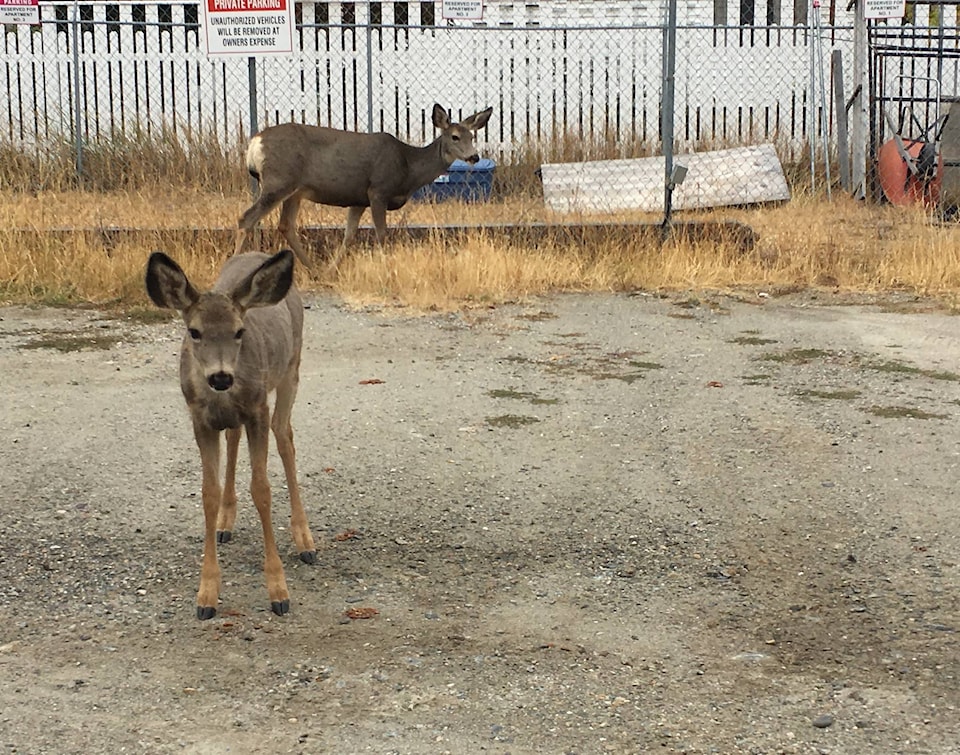Every year, at this time of year, the Kimberley Urban Deer Advisory Committee (UDAC) comes together to complete the annual dear count.
The count is required every year so that the City knows hows many deer are in Kimberley in order to deal with population control. The count is based on the UDAC’s Managing for the Future document, which the City follows. The document covers all aspects concerning urban deer from population control to bylaws and community education.
The deer count is conducted in approximately eight different areas, covering all of Kimberley within City limits. Teams of two (or more) count the deer in different neighbourhoods at the same time on the same day.
On Monday, Dec. 5, I, alongside Kimberley City Councillor Darryl Oakley, completed the deer count for Townsite. There were a total of 14 deer spotted in Townsite, the majority of which were Bucks.
Oakley has been Council’s representative to the UDAC for six years and he says the goal is to keep the deer population below 125.
The Managing for the Future document states that the City is to manage and reduce deer populations in town if numbers reach or exceed 125, says Oakley. Any number above 125 tends to see more human-wildlife conflict.
“Essentially, if you counted 50 deer in town that would be okay,” said Oakley. “It’s a community safety thing. We will see where the numbers end up with this count [but] I have a sneaking suspicion it’s going to be up this year.”
Oakley says that many other cities and towns also conduct an annual deer count and that it is a fairly accurate way of counting deer.
“To put a tracking collar on all of the deer would be expensive,” he said.
This year, the City applied for a pilot project to translocate 50 deer as a method of population control. It’s a complicated, lengthy process, dealing with two provincial ministries, public complaints, responsibility to tax payers and new hurdles to jump every step of the way.
Read More: City Council approves funding for deer translocation.
As the City’s Managing for the Future Document states, in January of 2012, 99 deer were removed through (kill) culling in Kimberley.
“A contractor was hired based on cost and knowledge to trap, dispatch and manage the meat management and distribution. The objectives, as far as culling the deer was concerned were met, however the process created social unrest and conflict within the community,” said the document.
“Managing deer within Kimberley is always going to be a financial, political, social, emotional and environmental challenge. Deer populations will continue to grow and create public safety issues and citizens concerns unless the numbers are managed down to a reasonable number.”
As Oakley says, deer are the responsibility of the province, so any step to deal with them in any way requires provincial permission. The City and UDAC have been working with both Minister Donaldson of Forest, Lands, and Natural Resource Operations as well as FLNRO’s Wildlife Biologist, Irene Teske.
Read More: Cranbrook Council tired of taking the flack for the province’s deer.
The current study around translocation of mule deer is not yet final, although preliminary results indicate that translocating the mule deer out of urban areas doesn’t seem to be causing stress to the animals, which was a major concern.
Mayor Don McCormick says that although translocation is considered a pilot, there is a possibility that Kimberley could receive a permit for translocation this coming winter. The deer count will help to determine just how many deer will be relocated if the permit is approved.
The total deer count for this year is currently being compiled, more to come.
